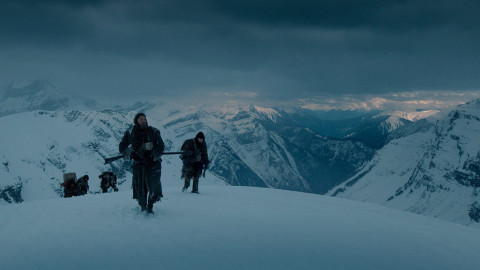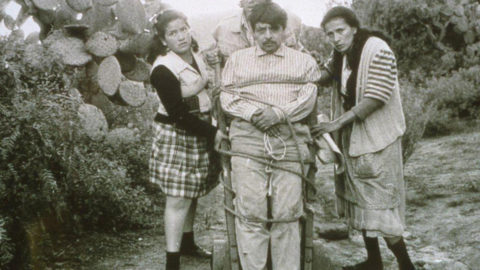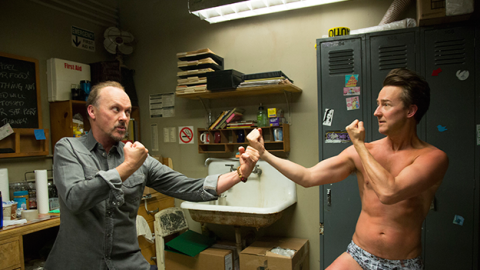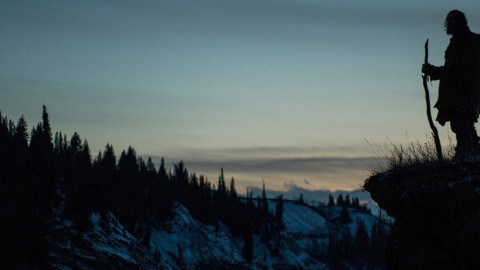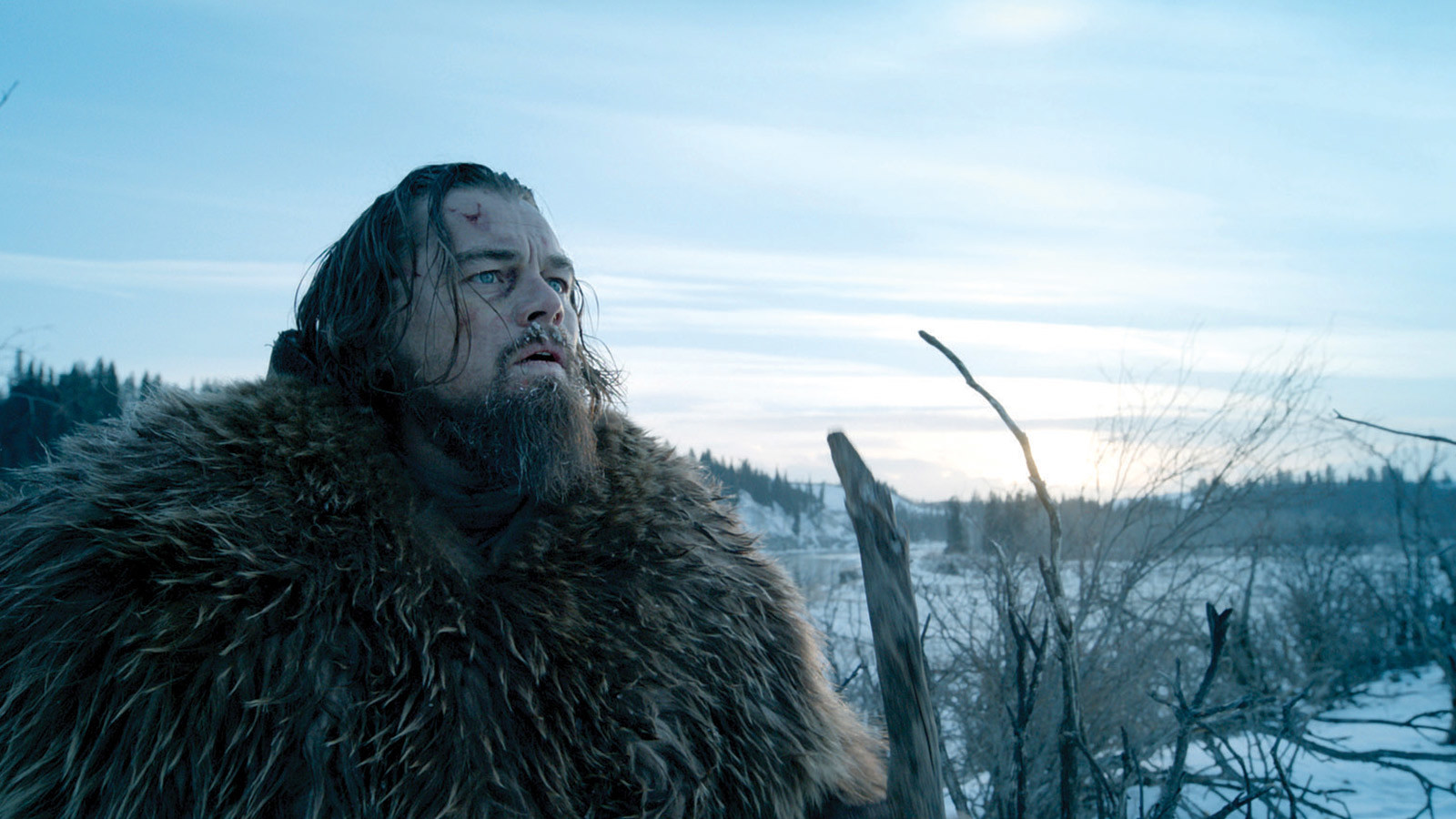
Into the Woods
There’s a moment roughly a third of the way into The Revenant, Alejandro G. Iñárritu’s survivalist Western cum frontier existentialism fable,when a group of men are pulling a wounded trapper along on a primitive sled. Their comrade, a man named Hugh Glass, has been mauled by a grizzly bear; the rest of his hunting party, exhausted by Indian attacks and brutal winter weather, are barely able to drag him along the icy path. They come to a steep, snowy incline, and attempt to push the makeshift gurney up the hill Sisyphus-style, Glass’s groans of pain resounding through the landscape. “That’s us right there,” the 52-year-old filmmaker says, referring to himself, his star Leonardo DiCaprio, and the rest of his cast and his crew. “The cold, the snow, the pain, the determination, the frustration—that was us making the movie. Except the characters could go back down and find another way. We couldn’t. We had to keep going up that rock, so to speak. There was no turning back.”
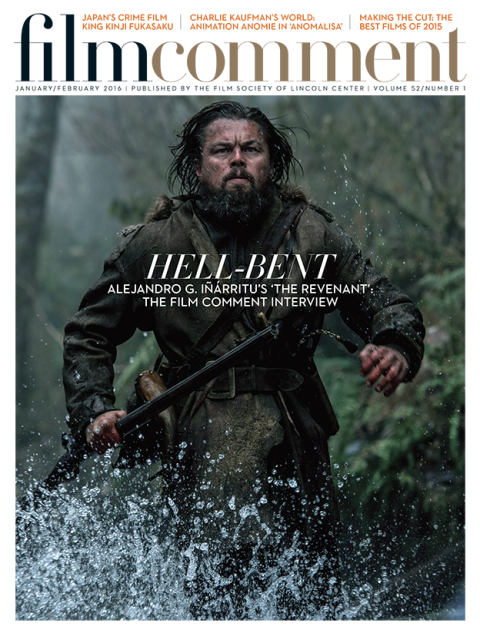
Already mythologized as a difficult production of Cleopatra proportions—the sort that inspires industry gossip and schadenfreude over supposed crew mutinies and accusations of old-school cinemegalomania—The Revenant refuses to do anything the easy way. Shot in sequence in remote locations under the harshest of climates and conditions, filled with long takes involving meticulously coordinated battle scenes and magic-hour lighting courtesy of Oscar-winning cinematographer Emmanuel “Chivo” Lubezki, Iñárritu’s film is a revenge parable that wears its beauty and its batshit-crazy backstory on its sleeve. But it’s also clearly the work of a visionary director, one who saw a transcendental tale of man versus nature in the real-life Glass’s journey, and went to insane lengths to find a form befitting of that deeply embedded material.
The Revenant also builds on Iñárritu’s ability to coax stellar work out of his actors (notably DiCaprio, who barely speaks English—or anything else—for most of the movie) and continues his transformation from the narrative-juggling melodramatist of the “Mexican New Wave” who gave us Amores Perros (00), 21 Grams (03), and Babel (06) into the stream-of-consciousness stylist who pecked out of his shell to make Birdman (14). You can’t say the movie does not bear the mark of its creator, or that this attempt to make a baroque comment on the blood-soaked landscapes that modern America is built on was not an ambitious move forward as an artist. You can love or hate The Revenant for its excesses, glorious and otherwise. But you can’t dismiss it as anything less than a film of incredible commitment, conscience, and chops.
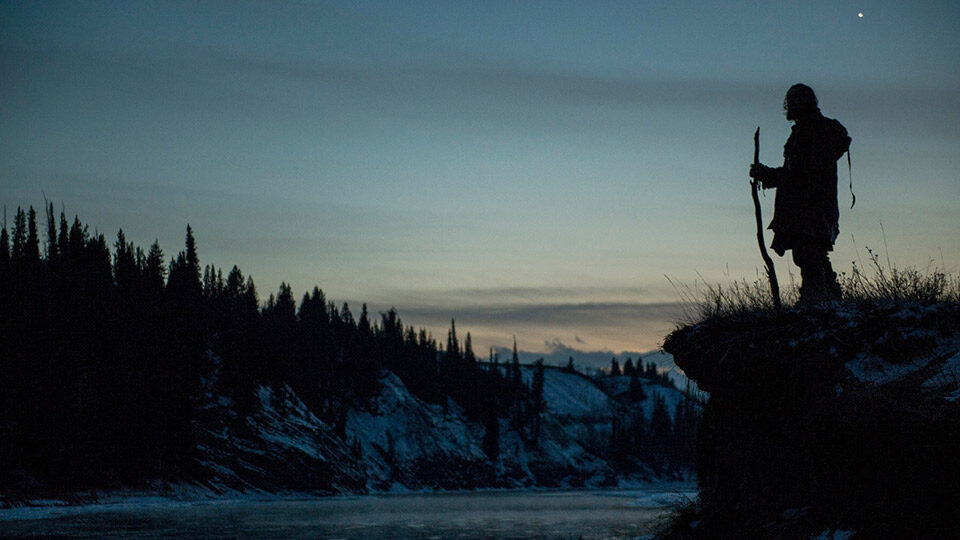
The Revenant
How far back do you go with this project?
It starts in 2010 with [producer] Steve Golin, who passed me a draft of Mark L. Smith’s script, based loosely on the book about Glass by Michael Punke. The only thing that the script took, really, was the name and the central anecdote: that Glass was attacked by a bear, he was taken care of, abandoned, and then took this nearly 200-mile journey in the winter. That’s really the only historical fact—a lot of his story is built on legend.
I was attracted to the idea of doing one more thing I had never done, in terms of moviemaking. I was interested in the idea of looking into resilience, endurance… I wanted to see what could be explored by a man in the wilderness in near-silence, taking on nature, and what the spiritual dimension of this man was.
Had you wanted to make a Western?
It’s technically not a Western. It takes place before the West exists, after Lewis and Clark but before the gold and the oil. And because that moment plants the seed for today, it felt very relevant to me.
How so?
Corporations would hire illiterate poor people or runaways and sign them up for indentured servitude more or less, and the men would usually spend more than they earned by default. Racism was the norm, and ignorance was encouraged. The land was being raped for profit. Essentially, it’s the beginning of modern unregulated capitalism as we know it. Give back nothing, and get away with everything.
Predating the establishment of the West or not, the film still qualifies as a Western, doesn’t it? It’s full of that iconography… even if it’s flipping some of those signifiers on their heads.
It’s more about the iconography and the landscape. But in the purest way, no… I never saw it as a Western. The themes and questions I wanted to explore were ones that I don’t associate with the Western. I know what John Ford and Sam Peckinpah have done with the genre, and I’ve seen a lot of the great American Westerns. I didn’t have a problem when I was younger with thinking that the Western’s ideal of revenge as a goal—as something that would be accomplished and then order is restored, everyone lives happily ever after—was okay. As an adult, I definitely have a problem with that now.
I wouldn’t say that Westerns were a big influence on The Revenant at all, really. I was looking more toward things like Dersu Uzala by Kurosawa, Tarkovsky’s Andrei Rublev—which is maybe my favorite film ever—Herzog’s Aguirre, the Wrath of God and Fitzcarraldo, even Apocalypse Now. These are movies that are epic, that have spectacle and are very grand statements, but are informed by the crazy fucking theatrical show that is the human condition. The beauty and harshness of nature impacts your state of mind in these movies. There’s a very intimate point of view from one single character in each. That’s the challenge. Anyone can film a beautiful landscape. Unless you have an emotionally grounded story in there, it’s all just fucking sorcery.
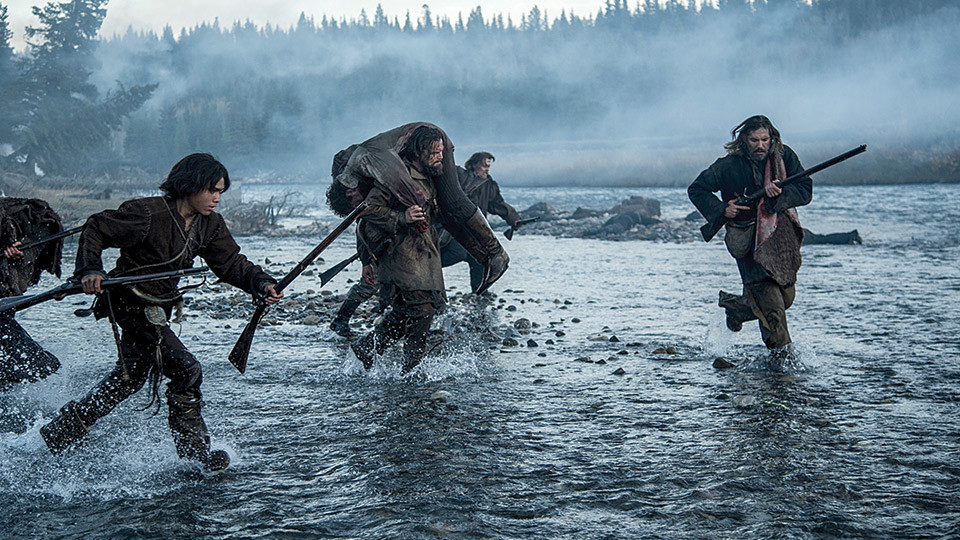
The Revenant
To continue reading this interview, please purchase the January/February 2016 issue.
David Fear is a contributor to FILM COMMENT and Rolling Stone.



